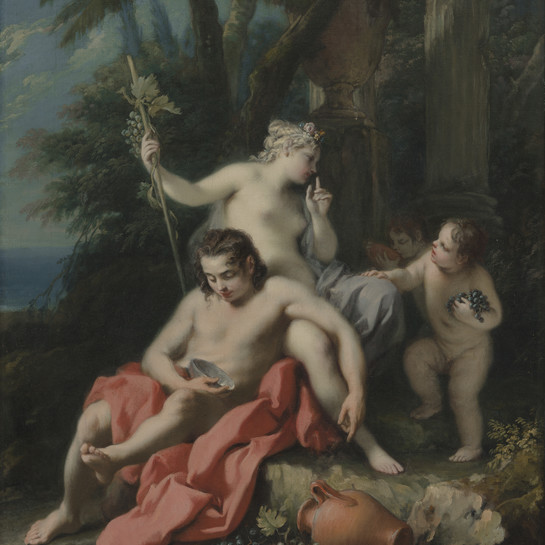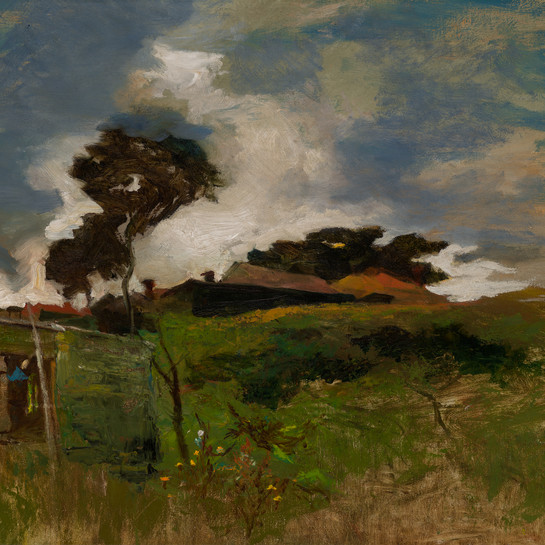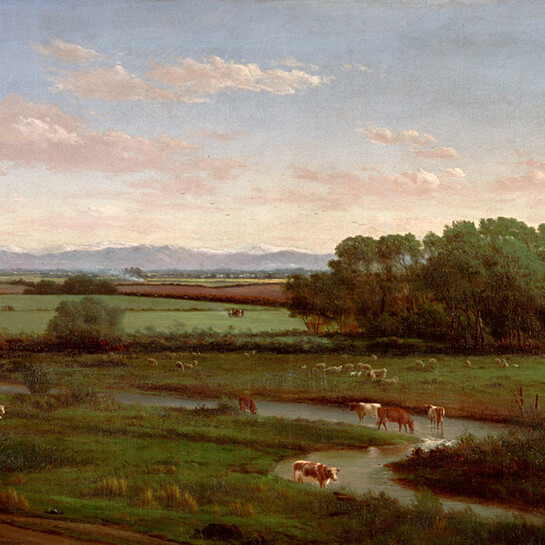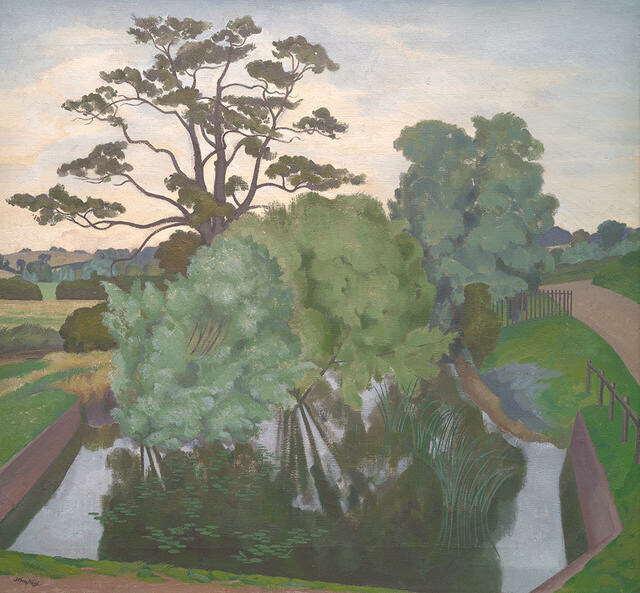John Nash
British, b.1893, d.1977
Wormingford
- c. 1940
- Oil on canvas
- Presented by Miss Maureen Raymond in memory of S G Raymond, 1942
- Reproduced courtesy of New Grafton Gallery
- 719 x 772mm
- 69/364
- View on google maps
Tags: buildings (structures), fences, green (color), houses, landscapes (representations), reflections (perceived properties), rivers, trees
Having experienced trench warfare at first hand during World War I, which he described as “pure murder” from which he was “lucky to escape untouched”, John Nash grew to truly appreciate the tranquillity and beauty of rural England on his return. He moved to the countryside soon after the War, first to the village of Meadle before settling at Wormingford in Essex in 1929. Nash and his wife Christine eventually purchased Bottengoms Farm, where he established his studio on the top floor of their cottage and often painted the view looking down onto his garden and the farmland beyond.
(New Dawn Fades, November 2018)
Exhibition History
Wormingford is a village in the County of Essex, England. John Nash and his wife, Christine, settled in the area after World War II. Nash established his studio on the top floor of their cottage and often used the view looking down onto his garden and the farmland beyond. Nash finished his paintings in the studio from sketches and watercolours made outdoors. In this landscape he has created a sense of pattern through his abstract rhythm of trees, water and other elements.
Born in London, Nash had no formal training but was encouraged by his older brother, Paul (1889 - 1946), also an artist. Nash assimilated the ideas of some of the more innovative English Modernists and was a founder member of the London Group. Later he became a member of the New English Art Club. Nash was an official war artist in 1918 and again in the Second World War. He was awarded a CBE in 1964 and an honorary doctorate from the University of Essex in 1967. (Label date unknown)



